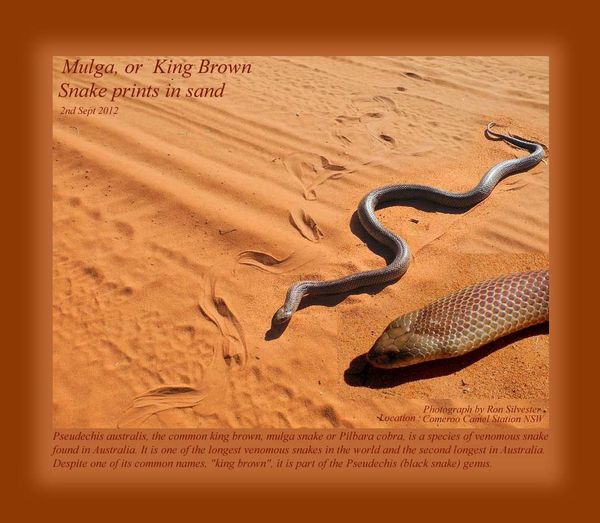Nikon question about lenses
Sep 20, 2012 17:50:07 #
Wow get you.....instead of raising what if's, why not offer advice or answer the question asked......thought not ...... You can't
Sep 20, 2012 17:53:54 #
?
I am PJ wrote:
Wow get you.....instead of raising what if's, why not offer advice or answer the question asked......thought not ...... You can't
Sep 20, 2012 18:12:05 #
??
I am PJ wrote:
Wow get you.....instead of raising what if's, why not offer advice or answer the question asked......thought not ...... You can't
Sep 20, 2012 20:04:04 #
Screamin Scott wrote:
I agree. Budget is first priority. Then discussion of whether DX format with high-end lenses is superior to FX format with less expensive lenses. Glass is forever; bodies come & go.She may not be thinking in those terms though...We don't know much about her aspirations & finances to be able to give her advice...If she spends that much on the camera, that doesn't mean she wants to spend as much on a lens, or rather lenses as she mentions macro as well as "zooming in on wildlife"...Methinks she is rather new to all this & doesn't realize the expenses involved...Wish she would pop back in so as we would be able to better guide her.
Sep 20, 2012 20:12:05 #
susie-q-tip wrote:
I'm considering purchasing the Nikon D600. What would be the most useful first lens to buy along with the body? I don't want to weigh myself down and have to be constantly changing lenses. I'm hoping to get some good advise from some of you seasoned photographers. I do close-ups of flowers and also want to be able to zoom in on wildlife to a certain degree. What do you say?
Going back to the original question. An all around lens that can also be used as a macro? The Nikon 28-300mm. It will allow you to zoom in on wildlife and anything that your heart desires. The price is also, right, about $1100.
Sep 20, 2012 20:54:33 #
Wow! Do I know how to get a discussion going? I've been reading everything here along with lots of articles by Ken Rockwell. I'm only a hobby photographer. I don't have an unlimited budget and don't have any plans to go semi-pro. I just love taking pictures and want a quality DSLR so I can get sharp photos. My Canon G10 is a great carry around camera and it does a good job at many things. What I can't seem to do is get really sharp photos up close. It's all AF and doesn't have focus points. It has a focus box. It focuses on whatever is in the box. If the subject I want to focus on is smaller than the box, it averages whatever is in the box. Therefore I get soft photos.
After studying comparisons of the various cameras and researching the available prices, I'm considering a Nikon D7000. It lacks some of the newer bells and whistles, but costs about $1000 less. I can get one with lens for between $1146 with a 55-200mm lens up to $1596 with an 18-200mm lens. I don't understand all the initials in the lens descriptions, so ]'m unsure which lens would be best for me. Where can I go to learn what all the descriptions mean?
Thanks to everyone who has chimed in on my request. Members here are great!
After studying comparisons of the various cameras and researching the available prices, I'm considering a Nikon D7000. It lacks some of the newer bells and whistles, but costs about $1000 less. I can get one with lens for between $1146 with a 55-200mm lens up to $1596 with an 18-200mm lens. I don't understand all the initials in the lens descriptions, so ]'m unsure which lens would be best for me. Where can I go to learn what all the descriptions mean?
Thanks to everyone who has chimed in on my request. Members here are great!
Sep 20, 2012 21:13:32 #
Here is a link with some of the most important abbreviations. The most important would be ED for the treated glass and VR for vibration reduction. Nikon is now into VR II in its latest lenses. If you look at lenses on the Nikon site, any other abbreviations would be explained. IF for internal focusing would also be important.
http://www.squidoo.com/camera-lenses-abbreviations#module70238481
http://www.squidoo.com/camera-lenses-abbreviations#module70238481
Sep 20, 2012 21:53:19 #
SteveR wrote:
Here is a link with some of the most important abbreviations. The most important would be ED for the treated glass and VR for vibration reduction. Nikon is now into VR II in its latest lenses. If you look at lenses on the Nikon site, any other abbreviations would be explained. IF for internal focusing would also be important.
http://www.squidoo.com/camera-lenses-abbreviations#module70238481
http://www.squidoo.com/camera-lenses-abbreviations#module70238481
Thanks a bunch. This will be really useful no matter which camera I finally choose.
Sep 20, 2012 22:13:39 #
I also have a D7000, which is a wonderful camera; you will not be disappointed in its performance.
susie-q-tip wrote:
Wow! Do I know how to get a discussion going? I've... (show quote)
Sep 21, 2012 09:15:19 #
SteveR wrote:
Here is a link with some of the most important abbreviations. The most important would be ED for the treated glass and VR for vibration reduction. Nikon is now into VR II in its latest lenses. If you look at lenses on the Nikon site, any other abbreviations would be explained. IF for internal focusing would also be important.
http://www.squidoo.com/camera-lenses-abbreviations#module70238481
http://www.squidoo.com/camera-lenses-abbreviations#module70238481
Thanks a bunch. This will be really useful no matter which camera I finally choose.
Sep 21, 2012 09:58:45 #
Hi susie-q-tip
If you know alot about photography and your pockets are full of disposables, then go for the recommendations of various combinations of zoom/combos. As you are asking, then I suspect not.
If you've got the time to choose and want to learn, then checkout this MANUAL lens combo: a secodhand 50 1.4 or 1.2 for serious ddepth of field control and low light stuff. Then try for a secondhand manual Nikkor 200 F4 Micro.
Why?
with the fifty lens as a light weight it is easy to carry around and serves as very effective wide angle lens when you do a panorama; which is much more effective than a wide angle, for many reasons that would need a book on the subject, not suitable for here. This lens, or other manual, single focal length will give you better quality - for a number of reasons. With the addition of a good quality 2x it becomes an effective portrait lens.
The 200 macro speaks for itself, Is also an effective tele and about as long a focal length as you want to prevent camera shake. The 2x will work with this one as well, you only need to realise that you should use a tripod with this 400mm combination or at least rest the gear on something stable, nearly impossible in a boat when photographing water birds, but not totally if you know your cameras' ISO limitations and, what you' eoing with avoiding shake.
With this two lens combination, three lens combo if with the smaller 2x converter, then you will find you have a very light weight, quality combination which will also ensure you learn the most important things about taking photographs, what relationship the aperture has with the end result, as with the shutter speed when you are limited to first learning about these two most important controls. Then, when you know it all, buy whatever you want in lenses, larger gadget bags and some sort of shoulder support and back brace.
Happy travelling and macro and come back with lots of magnificient shots to share with family and your UHH acquaintances.
If you know alot about photography and your pockets are full of disposables, then go for the recommendations of various combinations of zoom/combos. As you are asking, then I suspect not.
If you've got the time to choose and want to learn, then checkout this MANUAL lens combo: a secodhand 50 1.4 or 1.2 for serious ddepth of field control and low light stuff. Then try for a secondhand manual Nikkor 200 F4 Micro.
Why?
with the fifty lens as a light weight it is easy to carry around and serves as very effective wide angle lens when you do a panorama; which is much more effective than a wide angle, for many reasons that would need a book on the subject, not suitable for here. This lens, or other manual, single focal length will give you better quality - for a number of reasons. With the addition of a good quality 2x it becomes an effective portrait lens.
The 200 macro speaks for itself, Is also an effective tele and about as long a focal length as you want to prevent camera shake. The 2x will work with this one as well, you only need to realise that you should use a tripod with this 400mm combination or at least rest the gear on something stable, nearly impossible in a boat when photographing water birds, but not totally if you know your cameras' ISO limitations and, what you' eoing with avoiding shake.
With this two lens combination, three lens combo if with the smaller 2x converter, then you will find you have a very light weight, quality combination which will also ensure you learn the most important things about taking photographs, what relationship the aperture has with the end result, as with the shutter speed when you are limited to first learning about these two most important controls. Then, when you know it all, buy whatever you want in lenses, larger gadget bags and some sort of shoulder support and back brace.
Happy travelling and macro and come back with lots of magnificient shots to share with family and your UHH acquaintances.
Sep 21, 2012 10:07:58 #
While I use a lot of older manual focus lenses, we can't assume the OP would be comfortable doing so. Besides the fact that she would have to manually focus those lenses (which she may not want to do). She would also be limited in choice of exposure modes (A & M only , maybe not even those if she goes with a lesser model). That said though, it is a good way to get older "Pro" level glass for a lot less money
rts2568 wrote:
Hi susie-q-tip br If you know alot about photograp... (show quote)
Sep 21, 2012 10:41:23 #
Thanks Screamin Scott
,
Indeed you are. You may not have noticed, but my advice partially centered around the learning about controlling the outcome of photographing. Manual lenses do that, as well as being lighter very often, cheaper to start off with and effective confidence builders.
I'm ceertainly not going to presume what the reader of my suggestions wants of my advice or not, as you are, unless they choose to reply etc. The manufacturer will want you to buy the latest offered, mostly these days in the slow zoom range. I have been a devoted Nikon user for a few years and only have manual lenses bar one. A cheaper zoom in the standard focal length range for the D200. Other than an E lens I bought some years back, this new, slow Nikkor Zoom 18-55 mm is the worst lens I have ever used and it has quite knocked my respect for Nikkor lenses for six. So I'm not going to suggest pre purchase of a current zoom lens because I know from experience; that experience is the best recommendation. If anyone knows from experience what they want and know something about the market stock and its quality, then they can go out and buy the best they can afford in the pro range, if that is, they want to lose the manuals they learned with.
My advice is always offered with the primary aim of helping the camera user to get the best, consistently best end images.
If that offering is rejected by whoever it was seeking suggestions or help, then so be it, their choice. My recommendations remain as they were.
Thanks for your contribution, perhaps we've both learned something here and what, I ask you, is the point of this clever learning device called UHH?
What the UHH teaches us all, Screamin Scott, is to tread carefully while on this Earth and the best way to do that is to know what you are putting your foot into/onto.
,
Indeed you are. You may not have noticed, but my advice partially centered around the learning about controlling the outcome of photographing. Manual lenses do that, as well as being lighter very often, cheaper to start off with and effective confidence builders.
I'm ceertainly not going to presume what the reader of my suggestions wants of my advice or not, as you are, unless they choose to reply etc. The manufacturer will want you to buy the latest offered, mostly these days in the slow zoom range. I have been a devoted Nikon user for a few years and only have manual lenses bar one. A cheaper zoom in the standard focal length range for the D200. Other than an E lens I bought some years back, this new, slow Nikkor Zoom 18-55 mm is the worst lens I have ever used and it has quite knocked my respect for Nikkor lenses for six. So I'm not going to suggest pre purchase of a current zoom lens because I know from experience; that experience is the best recommendation. If anyone knows from experience what they want and know something about the market stock and its quality, then they can go out and buy the best they can afford in the pro range, if that is, they want to lose the manuals they learned with.
My advice is always offered with the primary aim of helping the camera user to get the best, consistently best end images.
If that offering is rejected by whoever it was seeking suggestions or help, then so be it, their choice. My recommendations remain as they were.
Thanks for your contribution, perhaps we've both learned something here and what, I ask you, is the point of this clever learning device called UHH?
What the UHH teaches us all, Screamin Scott, is to tread carefully while on this Earth and the best way to do that is to know what you are putting your foot into/onto.
Eastern bearded dragon - Friendly & curious

Always allert but timid, stubby tail

Mulga - cautious, not timid & very poisonous, one of the longest snakes in the World.

Sep 21, 2012 11:03:56 #
I like Screamin' Scott's idea, especially if the price is right. Having at least one manual lens in your bag and using it regularly would help you understand photography. When I first started out with my Canon ftb, I was constantly checking my depth of field lever and changing my speed and aperture to get the effect that I wanted. I didn't have a f1.2 or 1.4 lens, I had a 1.8, but the 1.8 worked fine as well, but I shot mostly in normal lighting situations.
Sep 21, 2012 11:11:35 #
If you want to reply, then register here. Registration is free and your account is created instantly, so you can post right away.




